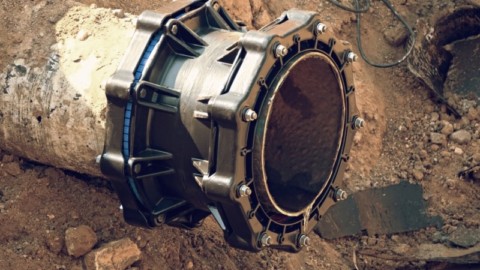Implementing real water saving actions can be complicated, but it doesn’t have to be. To ease large water users’ trouble with understanding the next course of action, WaterGroup, one of Australia’s largest integrated corporate water savings companies, has created a ten step plan for large water users to support their water journeys.
1. Define the goals
First, ask yourself: Why are you doing it? Is it for:
- Compliance
- Corporate sustainability goals – water reduction policy
- Achieve NABERS or Green Star rating
- Save costs
- Overcome water restrictions – to ensure adequate supplies, enable future development and other drivers
Unless you are clear on these issues, you cannot direct a study to give you the outcomes you want – and arrive at an action plan that can and will be implemented because it matches pre-agreed goals.
2. Management buy-in
Unless there is internal support from the bottom to the CEO to get serious about water savings goals, you will encounter major stumbling blocks along the way.
It is far easier to resolve these issues up front by playing a hypothetical ‘what if’ scenario. What if the report identifies that we can save 20 per cent of our water and costs at a payback of 3.8 years? Who will pay for it? Where in the budget is this money? How will you plan to have it allocated for next year? Who will approve the project? What will the assessment criteria be? Are there initiatives with a special ‘emotional attachment’, e.g., does the CEO want a rainwater tank?
3. Plan beyond the ‘audit’
Let’s assume you are doing a water savings assessment because you want to save water, not just achieve mere compliance. What will happen once you have identified where you use more water than is needed and what you could do to reduce potable water consumption?
You will need to consider where the money will come from, who will champion it and what internal resources will be available. How will the project be delivered: Internal, nominated suppliers, turnkey or traditional through detailed design, specification and tender, or a mixture of any of these?
What is the baseline you are reporting on? Most importantly, how will you verify your measures’ success, who and why? It is amazing how complex this question gets – once you delve deeper into it.
4. Decide on what is important and the level of detail
Depending on why you are assessing your water consumption (see above), you could directly focus on some ‘prime suspects’. Is there suspected leakage? Is there a process using most of the water? Do you know of major inefficiencies? Is it the main purpose of the study to identify a rainwater harvesting scheme or connection points to a recycled water scheme?
Knowing these answers can save you a lot of time and money. It allows you to concentrate your efforts on the important bits and ensure you get those right. Conversely, if you need to reconcile and understand water consumption right across the site, you will need to prepare an assessment of all water uses to obtain a water balance.
5. Plan for the water savings assessment
Before you rush out to your site, stay in the office, and let your fingers and eyes do the walking. Get the water bills for the last 12 months or, even better, three years. Where applicable, get the actual bills, not just the entry from the accounting system.
Is water billed on actual metered usage data or a pro-rata split (e.g. by NLA)? Does this cover the entire site – or more or less than it? Does any sub-metering or even smart metering data exist already? If so, obtain it and study it.
Get at least typical or general layout and hydraulic plans, as much as you can readily get your hands on. Fire evacuation plans can be most valuable. Get a Google Earth shot (or another up-to-date aerial). Find out about any site development plans. Check if existing water management plans exist and what water conservation efforts are already in place (if any). Are they still working? Savings achieved? Begin by preparing a simplified water supply schematic (single line diagram) and refine it after the site visit.
And finally, work out who’s who in the zoo. This will tell you who to contact and consult regarding what to spend effort on and what not and how to get critical information fast without annoying everybody.
Most importantly, remember that whatever measures you come up with, you will need support from the ground up and top-down. A big part of that is ‘accountability’. It is the first element of building the all-so-important ‘buy-in’. Often it achieves unexpected positive benefits.
Ready for more? Finish off your water savings assessment steps with a clear forward action and implementation plan by reading the final steps available here.
A water savings plan prepared in this fashion has every chance to result in real water savings actions implemented on the ground.
This has been a sponsored editorial brought to you by WaterGroup. You can find more information and whitepapers on their website.















